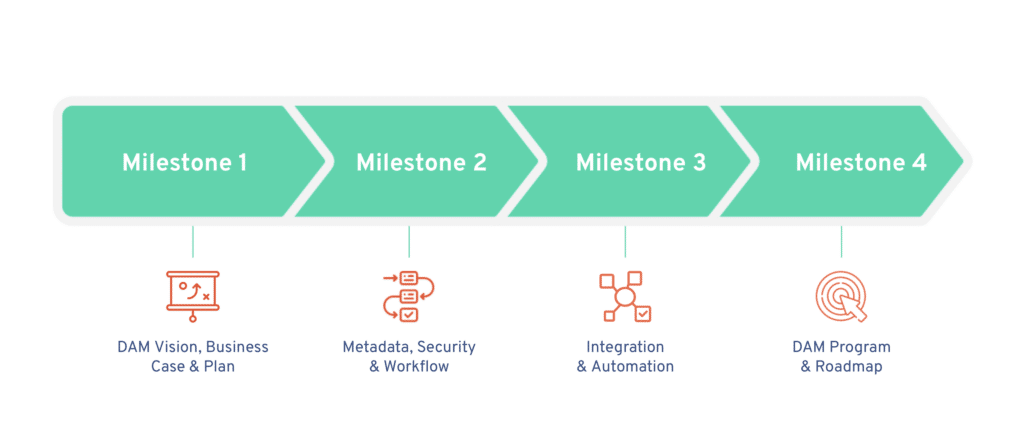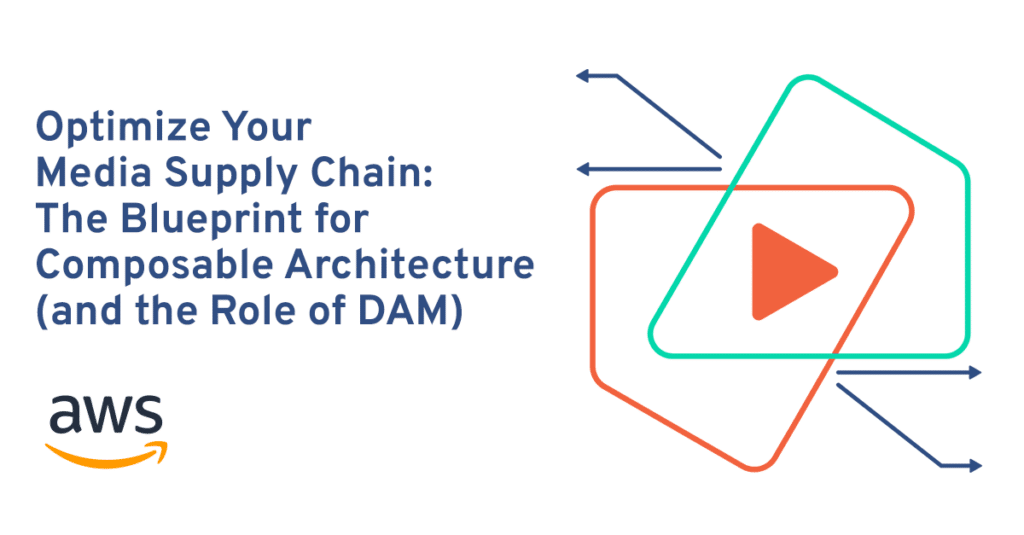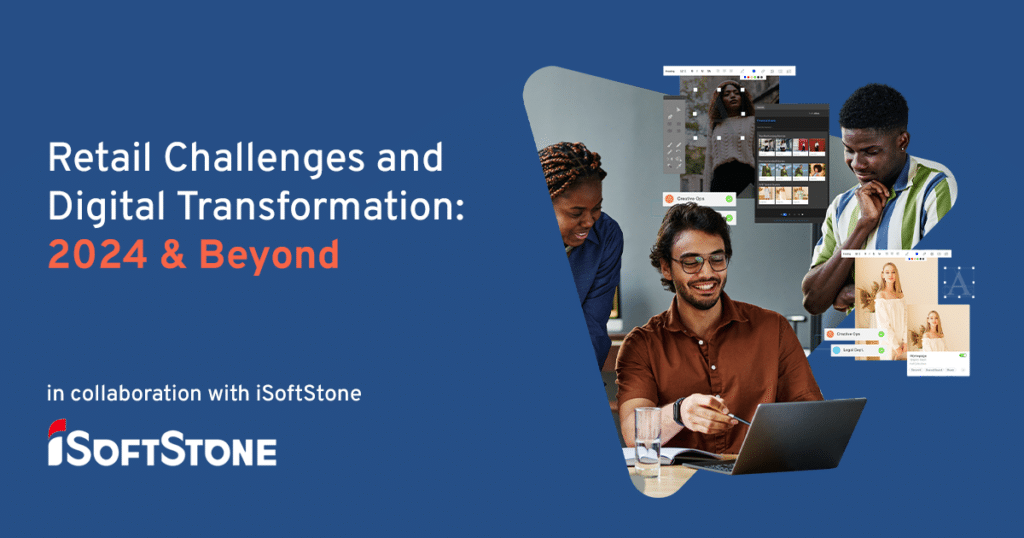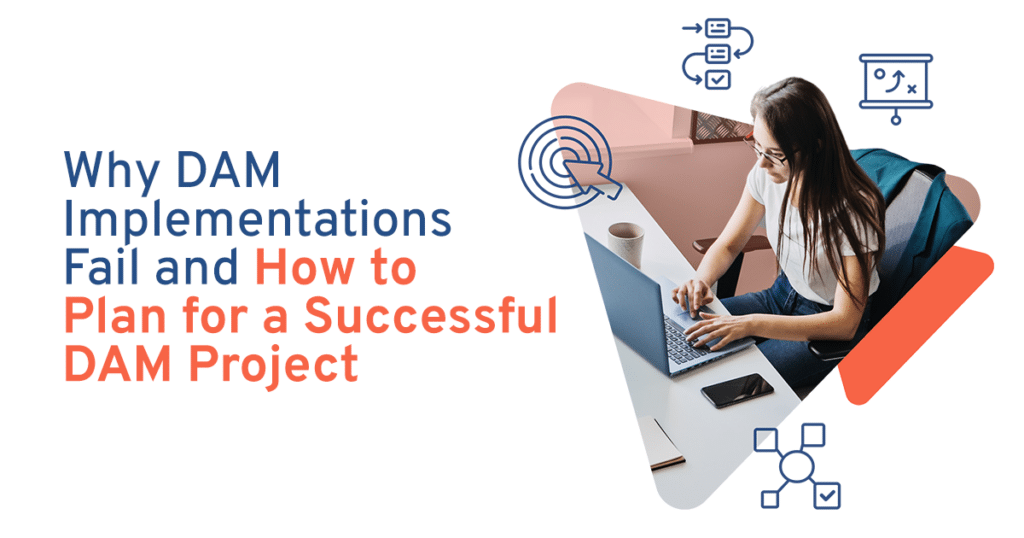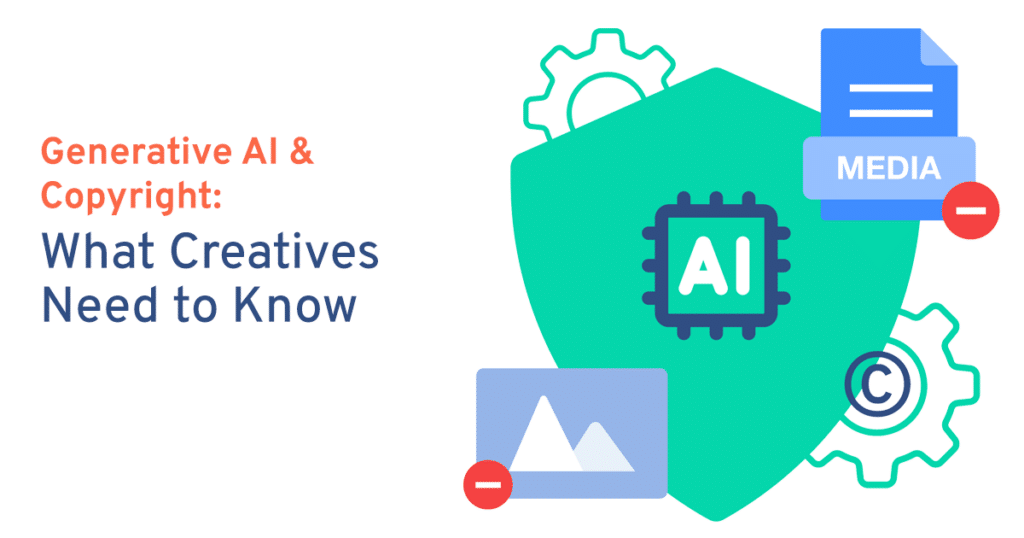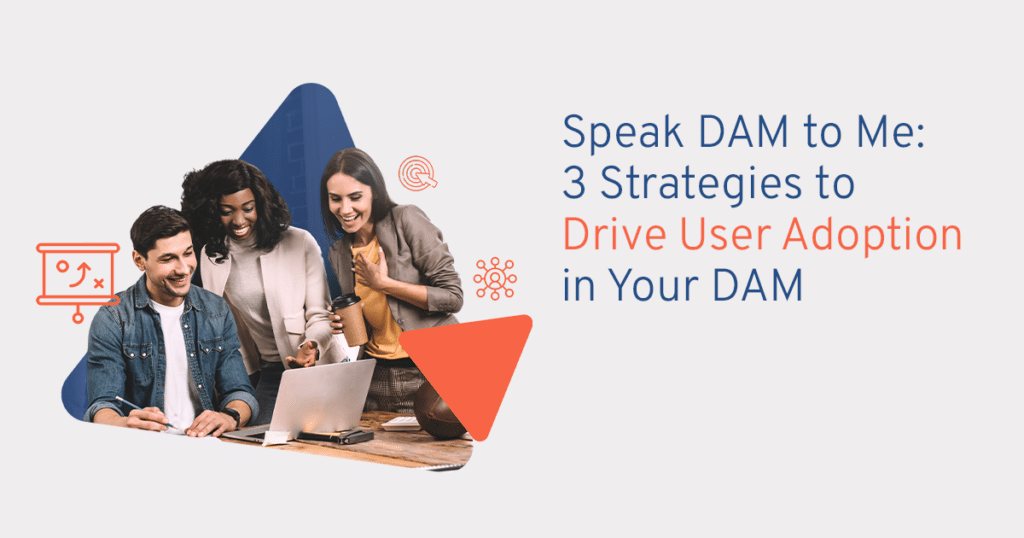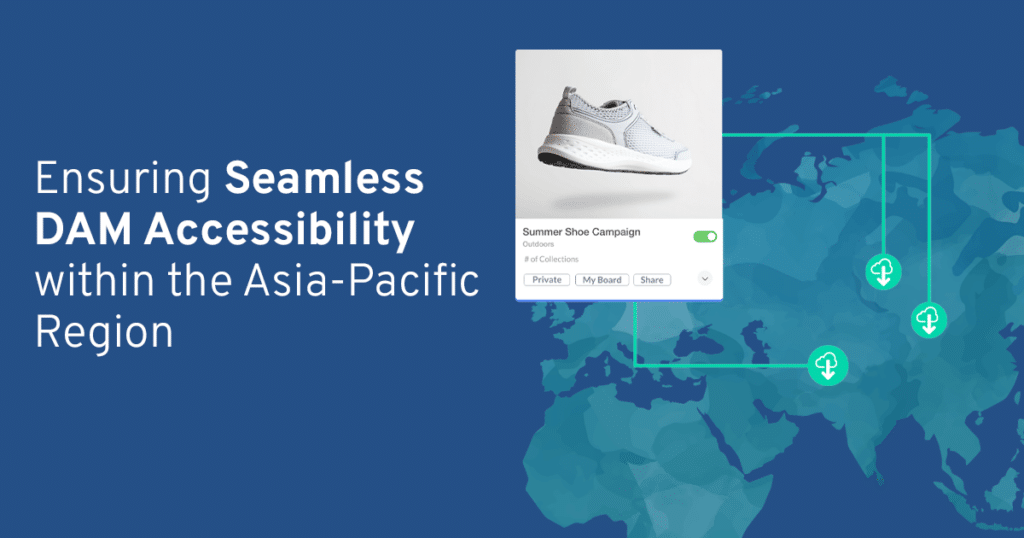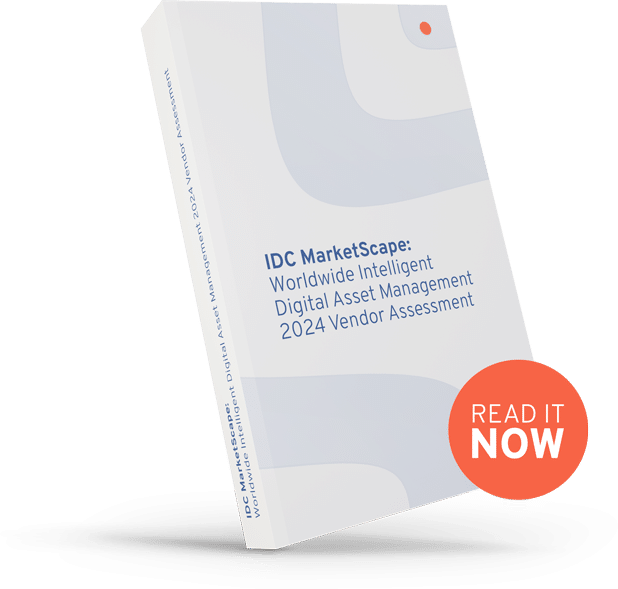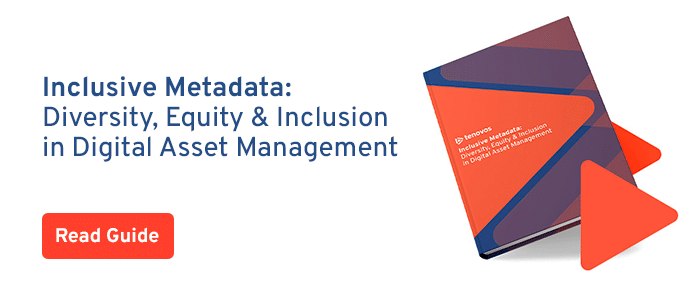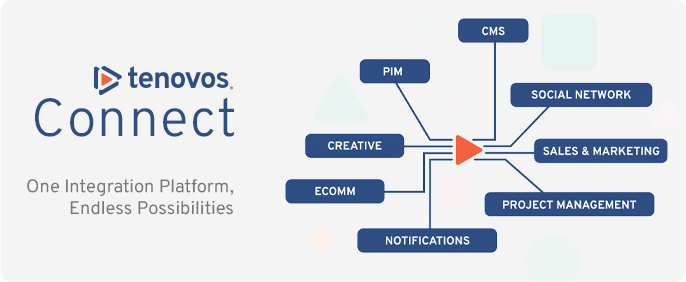By Tenovos in collaboration with iSoftStone and Qvest
Digital Asset Management (DAM) systems have become indispensable tools for organizations seeking to streamline content management processes, enhance collaboration, and improve overall efficiency. However, the journey to preparing for a successful DAM implementation can be riddled with challenges and pitfalls that, without the proper plan in place, can impede progress at every stage.
After investing significant time and money, the last thing you want is for your DAM implementation to fail.

In this blog, we will explore the key takeaways from our recent webinar featuring industry experts: Grant Spradlin, Vice President of Client Engagement at iSoftStone; Seshu Pandari, Senior Manager at Qvest and Steve Grimes, Vice President of Services at Tenovos.
The webinar focused on the milestones of preparing for a DAM implementation and the hiccups that may come at each stage. These three SMEs got together to address these challenges and how to both avoid them altogether, and respond to them if they come up.
If you’ve got some time to spare, you can watch the entire webinar here.
DAM Implementation Readiness Framework
The Implementation Readiness Framework is a 4-step approach created by industry experts with vast implementation experience, designed to set organizations on the path to a successful DAM selection and implementation.
This framework consists of four milestones as the foundation of a well-executed DAM selection and subsequent implementation, each offering insights into best practices and critical considerations essential for maximizing the return on investment (ROI) in your DAM project.
Your DAM Implementation Strategy for Success
Viewing your DAM journey through this framework is helpful for several reasons:
Structured Approach: A structured, milestone-based approach guides you to systematically address essential aspects of the implementation process, preventing oversight.
Key Milestones: Dividing the journey into milestones, with distinct challenges and solutions, makes the implementation more manageable and enables proactive resolution of potential issues.
Critical Considerations: Within each milestone, critical considerations encourage a thorough examination, ensuring well-informed decision-making and risk mitigation.
A Focus on Maximizing ROI: A successful DAM implementation should yield a positive ROI. Following the framework’s milestones equips you to ensure not only a successful start but also long-term benefits for your organization.
Now, let’s take a closer look at each of these four milestones.
Milestone 1: DAM Vision, Business Case, & Plan
Want to listen? Jump to 5:42 in the webinar.
With the rise of digital commerce, multi-channel experiences, marketing automation, and AI, DAM has transformed into a crucial system of record across the supply chain. It offers opportunities to enhance productivity and performance, making it a vital component of modern business.
At the outset of your DAM implementation journey, the first milestone is to establish a clear DAM vision, build a compelling business case, and craft a well-thought-out plan. This foundational understanding of the benefits of DAM is essential for ensuring your DAM project gains the necessary momentum to get off the ground.
Let’s explore the common roadblocks in this initial stage and how to navigate them effectively by focusing on what you need to accomplish in this milestone.
Common Roadblocks to DAM Implementation in Milestone 1
In most cases, DAM implementations kick off with creating a business case to secure the necessary budget. It’s no surprise that some DAM projects struggle to get off the ground due to issues related to budget constraints and the justification of the business case itself.
Whether you’re taking your first steps into digital asset management or a seasoned pro with multiple DAM systems under your belt, here are the roadblocks to be aware of and what you need to overcome them.
Insufficient Research
Creating a strong business case is the first step to soliciting the right DAM for your needs. A potential sticking point to preparing this may occur when insufficient research is conducted. Especially if it is your organization’s first time implementing a DAM, it’s crucial to thoroughly evaluate the scope of your organization’s assets, which may be scattered across hard drives, servers, and various file-sharing services.
Quantifying the potential benefits, such as time saved and reduced duplication of efforts, will be vital in crafting your business case and DAM vision to ensure you can move forward with a DAM.
Justifying Modernization
Justifying the need for modernization can be a tricky task, especially when your organization has a legacy of previous DAM experiences. Stakeholders may still be clinging to outdated practices and resistant to even more change. So, while the budget for DAM might already be in place, proving the necessity of a new DAM can still be a significant battle.
You need to differentiate the new DAM from your previous one with a new problem statement that focuses on innovative capabilities to rally around. Here, achieving incremental successes, like demonstrating value through a proof of concept (POC), becomes essential for gaining stakeholder buy-in and moving through this milestone.
Consolidating Multiple DAMs
If the goal is to consolidate multiple DAMs or DAM-like solutions, there are several things to consider.
First, having influential champions at the executive level is essential – these champions should possess the reach and influence needed to drive the consolidation process.
Secondly, you must be honest about what can and can’t be consolidated. It’s an accepted best practice to consolidate systems to reduce costs and centralize assets. However, suppose you’re an enterprise organization with radically different brands and unique processes. In that case, consolidating all systems is a more extreme proposition you may have a challenging time justifying, as all stakeholders are unlikely to agree.
For this reason, it’s acceptable – even wise – to enable some autonomy across brands and business units during this process. Being realistic and involving stakeholders (more on that here) to understand what level of consolidation is possible is the key to moving forward. Further, no matter what consolidation you propose, you must be ready to answer questions about governance and change management.
Lastly, having a robust content and technology strategy is crucial to success. DAM is part of a broader ecosystem of tools, and providing a clear roadmap outlining the transformation from the current state to the envisioned future state for your organization is crucial to justifying your business case and moving forward.
What Else Do You Need to Prepare for Success?
Executive Sponsorship and Stakeholders
Effective engagement with executives and stakeholders is paramount when preparing for your DAM implementation journey. It’s crucial to identify champions who can advocate for the project and garner support from higher levels of the organization.
Creating a stakeholder map is another essential step, allowing you to understand the influence of various stakeholders and tailor your communication accordingly. Implementing a feedback mechanism to gather their input and effectively support their needs is vital for ensuring smooth progress through this milestone.
How You’ll Measure the Success of Your DAM Implementation
To assess the impact of the implementation, it’s essential to have a clear understanding of your current state compared to the envisioned future state, which will serve as a benchmark for success. And to measure success, you need to understand and quantify your pain points thoroughly.
Identify areas within your workflow where performance improvements are expected and establish key performance indicators (KPIs) to track your progress.
For example, suppose manual content localization is a time-intensive and error-prone process within your organization. In that case, your DAM solution should aim to automate this process, which would result in significant cost savings. Of course, your business case needs to reflect this pain point and the expected results.
By following these best practices in Milestone 1, aligning your DAM vision with your broader organizational goals, and effectively engaging with stakeholders, you’ll pave the way for a successful DAM implementation.
Milestone 2: DAM Vision, Business Case, & Plan
Want to listen? Jump to 19:10 in the webinar.
The next leg of your DAM implementation journey involves metadata, workflows, and security. These components are the backbone of a robust digital asset management system; proper structuring is fundamental to ensure the system’s efficiency, effectiveness, and long-term success. Let’s explore the challenges that can surface in this milestone and how to address them effectively.
Identifying Metadata Requirements
Metadata plays a central role in making your DAM system a powerhouse for asset management. However, failing to establish a comprehensive metadata strategy when preparing for a DAM can lead to significant challenges in DAM implementation.
Inadequate or inaccurate metadata can result in poor searchability, inefficient asset organization, data duplication, loss of context, impaired reporting, user frustration, and resistance to system adoption. Addressing these challenges is essential to ensure a successful DAM implementation, requiring comprehensive metadata strategies and ongoing maintenance for data accuracy and consistency.
It’s crucial to ask and answer these critical questions:
- What types of assets are you managing, and what specific metadata requirements do they have?
- Do you understand the entire asset lifecycle, from strategy and creation to distribution, and how metadata supports this lifecycle?
- Who are the various user personas accessing the DAM, and how do they engage with assets?
It’s essential to understand your asset’s lifecycle, from strategy and creation to distribution, and how metadata supports this lifecycle, enabling you to track the time and effort invested and assess your return on investment (ROI).
If diverse user personas will be accessing the DAM, they may require more customized metadata. Third-party systems can be leveraged for comprehensive metadata enrichment in the DAM, including workflow tools, product information from PIM, DRM for rights, content management, syndication, and publishing.
Ensuring the quality and correctness of your metadata is equally crucial, necessitating quality checks, compliance processes, and user training. This approach not only helps you organize your assets effectively but also guarantees your DAM system’s long-term functionality.
Addressing Limited Existing Metadata
If you’re just jumping into the world of DAM, limited metadata at the beginning of a DAM implementation can be problematic. It results in reduced searchability, inefficient asset management, potential duplication of assets, compliance risks, collaboration challenges, and user frustration. To address these issues effectively, it’s essential to thoroughly assess your organization’s metadata requirements and the benefits of DAM, even if you’re new to the system.
When you’re dealing with limited or inadequate metadata for your assets, several strategies can help alleviate the challenges.
System Metadata: Basic system metadata, such as “created by,” “updated by,” “last updated,” “file type,” and “file size,” can offer some elementary information. Technical metadata like IPTC header information, resolution, and color space can be leveraged to enhance searchability.
Optical Character Recognition (OCR): OCR capabilities can extract text from images or PDFs, making their content searchable.
AI-Generated Metadata: AI can help identify people, topics, and keywords in images and time-based media, creating metadata to improve search capabilities.
Ensuring data accuracy and consistency is also crucial. Quality checks, compliance processes, and user training should be part of your strategy to maintain metadata quality.
Preventing DAM Failures Due to Workflow
A successful DAM implementation isn’t a one-person job; it requires collaboration and integration. When addressing workflow challenges, several key considerations come into play.
Establishing a Robust Workflow Definition: To support workflows effectively, you need a well-defined process that accounts for complexity, branching logic, and exception handling.
Tracking and Reporting: Determining what needs to be tracked, including key performance indicators (KPIs), is critical. Workflows can range from simple to complex, and you must consider their unique needs.
Leveraging Automation: Automation enhances workflow efficiency and should be incorporated wherever possible to reduce bottlenecks and increase efficiency. Learn more about the benefits of workflow automation here.
Understanding Fringe Cases: Recognizing potential user challenges to workflows and addressing them, especially in complex workflows, is vital for preventing DAM failures.
By addressing these key considerations and challenges in the Metadata, Workflows, & Security milestone, you can better position your DAM implementation for success by planning how you will overcome any potential roadblocks in the future.
Milestone 3: Integration & Automation
Want to listen? Jump to 33:10 in the webinar.
Milestone 3 focuses on the critical aspects of integration and automation, helping organizations plan to create a well-coordinated ecosystem where their DAM system serves as the central hub for content management.
Integrations are essential because they transform your DAM into the central hub within your content supply chain, linking various systems both upstream and downstream. These systems can encompass creative, production, e-commerce, marketing, and social activities.
Read the Quick Start Guide to DAM IntegrationsEffective integration and automation of metadata synchronization at different stages of the content lifecycle are essential for maximizing the potential of your DAM system.
Common Pitfalls in DAM Integration and Automation
Differentiating between integration and automation, you can consider automation an internal process within the DAM, while integration encompasses interactions with external systems. Often, integration and automation go hand in hand, with internal automation triggering external integration and vice versa.
However, there are common pitfalls to avoid in this milestone:
Designing Automation for Single Assets
One common pitfall is designing automation processes for individual assets when the need may be to handle assets in bulk. It’s crucial to consider how automation will work in bulk to support efficient batch processing, such as uploading, downloading, or updating metadata for multiple assets simultaneously.
Over-Reliance on Automation
While automation is a valuable tool, over-reliance without a fallback plan can be risky. It’s essential to have a plan to perform tasks manually when necessary, as automation can fail due to factors like software bugs or data irregularities.
Selecting Integration Opportunistically
Organizations often have a long list of integration requirements, some of which are necessary, while others are more of a “want.” A common pitfall is gravitating toward opportunistic integrations that may be trendy but lack a pressing business justification.
Prioritizing integrations is crucial for successful implementation, so you should focus on those that are operationally and strategically vital for your organization’s success.
Setting the System of Record
To ensure successful integrations and automation, you must decide the source of truth for your metadata. This source may include tools like Product Information Management (PIM), rights management tools, and workflow systems. Understanding your source of truth and identifying the tools that require integration is essential for ensuring data accuracy and consistency.
Maintaining data integrity and accuracy is another critical aspect of this milestone. This involves discussions about the synchronization process, whether real-time or batch-based. The sync solution should not be asset-specific but scalable and flexible, able to adapt to changes in both ‘the source of truth’ tool and the DAM.
Change management practices are also essential to ensure the smooth utilization of metadata, as user adoption issues can arise when changing metadata is not aligned with stakeholder needs.
Options for Systems with No API for Integration
In cases where an existing system lacks an API for integration, this should not mean implementation gets slowed down – your DAM vendor should provide solutions.
For example, if the goal is to pull metadata into the DAM for enriching assets, the DAM vendor can create a localized metadata cache from that third-party system. This cache can be periodically updated and used to assign metadata to assets.
If a push is required, choosing the consumable format downstream from an integration standpoint becomes crucial. It may be as simple as a CSV format, which downstream processes and applications for specific business purposes can consume. These strategies help bridge the gap when a system lacks a readily available API for integration.
By addressing common pitfalls and making informed decisions about integrations and automation, organizations can position their DAM implementation for success and ensure a seamless content supply chain.
Milestone 4: DAM Program & Roadmap
Want to listen? Jump to 44:58 in the webinar.
The final milestone centers around establishing a roadmap that aligns your organization’s goals with your DAM vendor’s strategic plans. This stage is crucial to preparation, because it ensures the continued success and evolution of your DAM system beyond the initial implementation.
Your Enterprise Roadmap
Having your enterprise roadmap is vital for a successful DAM implementation. It aligns your DAM project with your organizational goals, ensures a long-term vision, helps in risk mitigation, facilitates vendor alignment, enhances cost efficiency, and promotes flexibility and adaptability.
In essence, it’s a strategic tool that ensures your DAM system remains valuable, adapts to changes, and delivers a positive return on investment over time. With a well-defined enterprise roadmap, your DAM system becomes a valuable asset that not only meets your current needs but also evolves with your organization’s growth and changing priorities.
Next, let’s go over what should be considered in that roadmap and long-term plan.
Preventing DAM Failure Over Time
Even with a successful DAM implementation, some DAM solutions may eventually falter for various reasons, with three factors commonly at fault. To avoid this, you must understand and proactively address the issues that can undermine your DAM’s effectiveness.
Ensure Robust User Adoption
Fostering strong user adoption is key to mitigating DAM failures. Tackle issues arising from automation and integration by engaging champions and continually assessing user requirements. Recognize that various user segments, such as librarians, managers, and everyday users, may have distinct challenges and ensure you stay on top of addressing these challenges. Tailor your approach to meet their needs, ensuring the system remains user-friendly and valuable.
Navigate Implementation and Product Challenges
To sidestep potential failures caused by implementation or product-related issues, it’s crucial to choose the right DAM partner and have a long-term vision. Avoid underestimating the significance of a well-planned, long-term approach. This means looking beyond short-term Minimum Viable Product (MVP) solutions. Stakeholders need a clear understanding of the DAM’s trajectory, from the present state to the future state. By having a comprehensive plan in place, you can prevent unexpected roadblocks and ensure the system continues to meet your evolving needs.
Choosing the Right Fit for Your Organization
Technology fit is paramount in avoiding DAM failure. As your organization evolves from mid-market to enterprise, it’s essential to ensure that your DAM can adapt. Business shifts, workforce changes, and shifts in organizational direction can impact the technology fit. To avoid issues in this area, develop a long-term plan to meet the goals of your DAM vision during implementation.
This plan will likely include how you’ll continuously train your team, collect feedback, and deal with setbacks as they arise. This forward-thinking approach helps align the DAM with your organization’s long-term goals, preventing technology-related setbacks in the future.
Planning Regional and Global Rollouts
When planning regional and global rollouts, it’s crucial to identify stakeholders across regions, ensuring diverse representation and acknowledging regional variations. One size does not fit all, and you should understand the priorities, needs, and use cases of various regions and departments. Common failures in this context include a lack of champions during change management and inadequate user training. Providing training to different departments, regions, and groups is essential to support user adoption.
From a technical standpoint, consider factors like performance and how to meet different speeds and access policies. Creating a global governance framework for taking feedback, addressing user support issues, and enhancing aspects is vital. Whether it’s centralized or decentralized, it depends on specific needs, and this should be considered as you roll out the DAM.
Ultimately, Milestone 4 emphasizes the need for ongoing alignment and planning. The DAM journey doesn’t end with the implementation phase; it’s a dynamic and evolving process. This proactive approach allows for long-term success and maximizes the return on investment (ROI) in the DAM system.
Planning for Success Means Avoiding DAM Failures
In this blog, we’ve explored the intricacies of implementing a Digital Asset Management (DAM) system and how to ensure its success. The journey through DAM implementation can be challenging, but by following the four key milestones of the Implementation Readiness Framework, organizations can navigate it with confidence.
Each milestone was dissected to highlight potential challenges and offer proactive solutions.
By approaching the DAM journey through this strategic framework, organizations can make well-informed decisions, proactively mitigate risks, and maximize the return on investment (ROI).
So, as you embark on your DAM implementation journey, keep these insights in mind, and you’ll be well-equipped to navigate the complexities, ensuring your organization reaps the full rewards of an efficient, well-executed DAM system.

